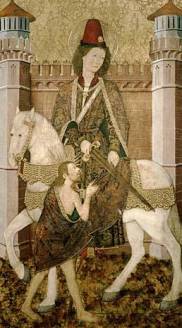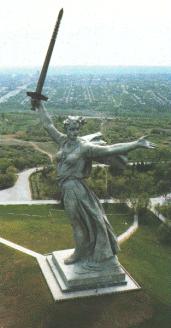Note : the following abbreviations will be used throughout this dissertation :
![]() FR = The Fellowship of the Ring.
FR = The Fellowship of the Ring.
![]() TT = The Two Towers.
TT = The Two Towers.
![]() RK = The Return of the King.
RK = The Return of the King.
![]() LOTR = The Lord of the Rings.
LOTR = The Lord of the Rings.
Excalibur, Damocles, Durandal… Everyone has in his mind names of famous swords which have travelled through time or legends and reached us. The graphic representation of swords reaches every domain, every artistic field : from painting to sculptures, from videogames to mangas, and of course the most influential visual industry : the cinema (even when Georges Lucas creates his Star Wars saga in the 1970’s, he equips his Jedi knights with light-sabres, and not with ‘traditional’ science-fiction’s laser-guns). So one can already states that swords have a timeless characteristic. But what about literature ? So elegant but also so deadly, they are a perfect illustration of the heroic-fantasy genre, of which J.R.R. Tolkien is considered as the godfather. Swords can hardly be dissociated from Tolkien’s writings, and the following extract, which does not come from LOTR seems to prove it. The text comes from On Fairy-Stories, a lecture given on 8th March 1939 (the full text is reproduced in the book The Monsters and the Critics and Other Essays, edited by Christopher Tolkien in 1983) :
Faerie is a perilous land, and in it are pitfalls for the unwary and dungeons for the overbold… The realm of fairy-story is wide and deep and high and filled with many things : all manner of beasts and birds are found there ; shoreless seas and stars uncounted ; beauty that is an enchantment, and an ever-present peril ; both joy and sorrow as sharp as swords. In that realm a man may, perhaps, count himself fortunate to have wandered, but its very richness and strangeness tie the tongue of a traveller who would report them. And while he is there it is dangerous for him to ask too many questions, lest the gates should be shut and the keys be lost. [1]
One also finds in Tolkien’s Farmer Giles of Ham the story of a man who inherits by chance the famous sword Caudimordax, a dragon-slayer which cannot stay sheathed if a dragon is within five miles. In his best-known tale, LOTR, swords are everywhere : heirlooms, mere objects, magical artefacts, evidences of kingly lineage, or simply weapons. Tolkien even chooses to embody them by naming them (note this interesting quotation by the author in one of the indexes at the end of the book : “n.b. names of swords and major weapons are in capital letters”) [2].
Of course, the reader can easily guess the obvious symbolic meanings of swords (because they appear as quite obvious : war, death…) but the symbolic and mythographic aspects and values of swords are far more richer and deeply rooted in legends, myths and cultures of our world. Is it possible to find out how these aspects and values appear in LOTR ? Where and when do they appear ? How are they linked to the different characters’ blades ? In a word, one will try here to discover the sources of inspiration used by J.R.R Tolkien in his gigantic story, as far as swords are concerned.
After an explanation of the three main issues of the dissertation’s topic (i.e. symbol, mythography and sword), and a presentation of Middle-earth’s peoples, the aim will consist in studying the myths, symbols and legends attached to swords in LOTR. Moreover, the reader will find at the end of this paper some appendices (a biography of Tolkien, glossaries, maps…) which may be helpful during the reading, in order to avoid confusion between the numerous names of characters, places and things of LOTR.
One can find below a brief list of examples of how swords’ representation evolves through time, and how it appears in various cultures and is even cast in futuristic visions :


[…]
[1] J.R.R. Tolkien, Tales from the Perilous Realm (London : Harper Collins Publishers, 1998) VII.
[2] RK 488.
